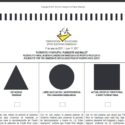In 2017, another referendum on PuertoRico’s political status took place. Statehood got 61% of the vote in 2012. In 2017, statehood got 97% of the vote.
Certainly, it’s hard to imagine a more definite and clear result.
However, statehood opponents took their chance to muddy the waters.
Boycott
When it was clear that statehood would win again, the opposition called for a boycott. Obviously, nobody boycotts a vote they can win. But the boycott, along with the clear expectation that statehood would win easily, kept turnout unusually low. Only 23% of registered voters cast their votes.
The United States has no requirements to vote. There is also no minimum number or percentage of votes required for elections. Look at some recent examples of voter turnout in the U.S.:
- Rep. Joe Pittman of Pennsylvania was elected with 17% voter turnout.
- Senator Markey of Massachusetts won in an election that brought out 27% of the voters.
- Mississippi Governor Tate Reeves won an election with 29% of eligible voters.
- New York’s Governor Cuomo was chosen in a primary with just 9.3% of registered Democratic voters.
- Mayor Bill de Blasio became Mayor of New York City in an election with 14% turnout.
- 2012 presidential primary votes averaged 17.3%.
- 2014 midterm elections across the country averaged just 36.7% voter turnout.
Surprising conclusions
In a democracy, the result of a vote is based on the votes cast, not on all the possible votes that could have been cast. Yet the anti-statehood factions used the 97% vote for statehood to suggest that the majority of Puerto Rico voters did not want statehood.
The surprising thing is that they got away with it.
Imagine that Mayor de Blasio’s opponent had called a boycott and just 14% of voters turned out — the actual turnout for the vote. Suppose these opponents then demanded that de Blasio’s win be overturned.Ridiculous, right?
Congress has failed to take action on Puerto Rico’s status for more than a century. They sat back and allowed the election deniers to have their way. This disenfranchised the real voters of Puerto Rico.
A reminder
it’s worth remembering that a referendum for statehood is not actually required by the U.S. Constitution. Puerto Rico has voted for statehood in three plebiscites — every vote that has taken place during this century. In all three cases, anti-statehood factions have worked hard to deny the election and suppress the vote. They do not have the law of the land behind them.
The U.S. Constitution does not say anything about how a status vote should be conducted. It doesn’t even require a status vote. Some territories, including Alabama and Arkansas, did not hold a vote on statehood before their admission at all.
The Puerto Rico Status Act calls for one more vote on Puerto Rico’s political status. We welcome this vote. We are confident that Puerto Rico will once again choose statehood, the clear majority position. We need Congress to respect the vote — if not the three preceding votes, all of which showed that statehood was the majority, then the one final vote to come.








No responses yet